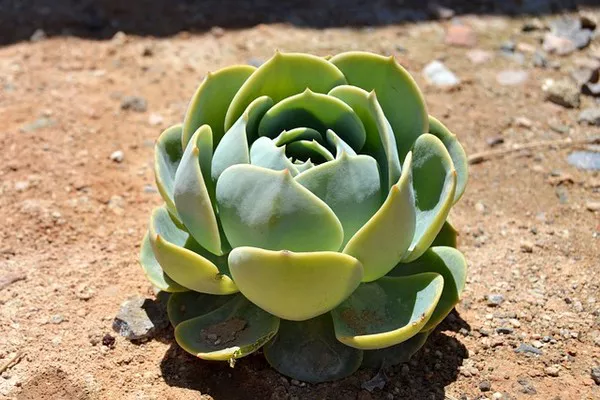Succulents have taken the world by storm with their unique beauty and low-maintenance care. A fantastic way to expand your succulent collection or share your favorite plants with friends and family is through leaf propagation. Planting a succulent leaf is a rewarding and budget-friendly method to grow new plants from established ones. In this article, we will provide a comprehensive guide on how to plant a succulent leaf successfully.
Understanding Leaf Propagation
Leaf propagation is a propagation method specific to succulents, where you use a healthy leaf to grow an entirely new plant. This process is both fascinating and cost-effective. The first step in successful succulent leaf propagation is understanding the basics of how it works.
Succulent leaves contain specialized cells that can store water and energy. When you take a leaf from a mature plant and encourage it to root and grow, you are essentially harnessing the plant’s ability to create a new succulent. However, not all succulent species are suitable for leaf propagation, and success rates can vary.
Choosing the Right Leaf
Not all succulent leaves are created equal when it comes to propagation. Some are more likely to succeed than others. When selecting a leaf for propagation, consider the following factors:
Health: Choose a healthy, plump leaf from a mature succulent. Avoid leaves that are damaged, infected, or discolored.
Size: Opt for a leaf that is mature but not too large. A leaf that is too big might take longer to propagate successfully, while a very small leaf may not have enough nutrients to support growth.
Type of Succulent: Different succulent species have different success rates with leaf propagation. Some popular choices for leaf propagation include Echeveria, Sedum, and Graptopetalum.
Leaf Orientation: Make sure the leaf is removed cleanly, with the base still attached. This is where the new plant will emerge. It’s essential to take the leaf correctly to ensure a successful outcome.
Preparing the Leaf
After choosing a suitable leaf for propagation, the next step is to prepare it for planting. Here’s how:
Gently remove the leaf: Carefully twist or cut the leaf from the main plant, ensuring that you leave a small portion of the leaf base intact. This base will be where the new plant begins to form.
Allow the leaf to callus: Place the leaf in a dry, shaded area for a few days to allow the cut end to callus. This step is crucial to prevent rot when the leaf is planted in soil.
Planting the Leaf
Once the leaf has sufficiently callused, it’s time to plant it. Follow these steps for a successful planting process:
Choose the right soil: Succulents thrive in well-draining soil. A mix specifically designed for succulents or cacti is ideal. You can also prepare your own mix using components like perlite, sand, and potting soil to ensure good drainage.
Select a suitable container: Use a shallow container or pot with drainage holes to avoid waterlogging. A small terracotta pot or seedling tray works well for individual leaves.
Place the leaf on the soil: Gently press the callused end of the leaf into the soil, ensuring that the base makes good contact with the soil. You can also use a toothpick or small stake to keep the leaf in place, if necessary.
Water sparingly: Water the planted leaf lightly to settle the soil, but avoid overwatering. Succulent leaves need minimal moisture during the propagation phase.
Provide indirect light: Place the container in a location with bright, indirect sunlight. Avoid direct sun exposure, as it can scorch the leaves.
Caring for Your Propagated Leaf
After planting the succulent leaf, it’s essential to care for it properly to ensure successful propagation. Here are some key care tips:
Patience is key: Leaf propagation takes time, and the new plant won’t appear overnight. Be patient and allow nature to take its course.
Maintain proper lighting: Keep the leaf in a well-lit area with indirect sunlight. Avoid moving it around too much, as stability is important for growth.
Water sparingly: Overwatering is a common mistake in succulent care. Water the leaf only when the soil has dried out completely, which may be once every 2-3 weeks.
Avoid touching the leaf: While it may be tempting to check on the progress of your propagated leaf, it’s best to leave it undisturbed as much as possible. Excessive touching can disrupt root and plant development.
Transplant carefully: Once the new plant has developed roots and a small rosette, you can consider transplanting it into a larger container. Use a similar well-draining soil mix and handle the new plant gently.
Conclusion
Planting a succulent leaf is a fascinating and rewarding way to grow new plants while preserving the charm of your existing succulent collection. With the right leaf selection, proper preparation, and attentive care, you can enjoy the process of watching a new succulent emerge and flourish. So, go ahead and give succulent leaf propagation a try, and soon you’ll be proudly displaying your thriving succulent offspring. Remember, patience is key, and in the world of succulents, the journey is just as beautiful as the destination.


